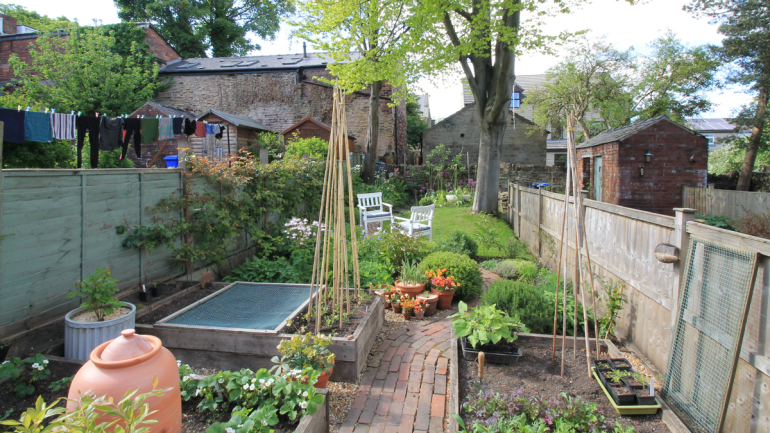“If there is no empirical evidence that supports the need for gardens, who can blame city planners for removing them?”

The mental and physical benefits of gardens are commonly acknowledged and enthusiastically celebrated. Despite this, there is still a lack of scientific evidence proving their value: until now.
You don’t have to delve into a lifestyle magazine for very long these days, before someone states how gardening has transformed their lives. Every fourth feature on a gardening TV programme seems to passionately report the value of gardens for one’s health and mental well-being. Before the current pandemic every RHS garden show had its health and well-being demo garden; during the height of the pandemic itself, YouTube was full of videos of people claiming their mental deliverance was simply due their ability to access their garden during lockdown. The interest in home gardening jumped five-fold during this period. Even Captain Tom did his epic marathon around his garden! Gardens had become sexy and the saviour of the nation – never mind “Dig for Victory” – “Garden for Survival” was the mantra for 2020.
So what has this got to do with academia and research? Well, I was wondering if my next paper might be entitled – ‘On What Planet Do Policy Makers Live?’ – obviously not ones that have private gardens that’s for sure. Certainly understanding the mood of the people does not appear to be a strong motivator for determining policy. Sadly, there is a strong sub-element within urban planning that still feels we should quite simply ‘do away’ with private gardens.
“Gardens are elitist”,
“They take up much needed urban space”
“They are a luxury”
“Kids don’t go outdoors anymore – why would they need a garden?”
“If we need green space it should be communal” (and often very bland!)
To a certain degree I have some sympathy with policy makers and planners – they actually should make their decisions based on evidence, not hearsay. (After all, keen gardeners would say gardens are wonderful, wouldn’t they!) Who can blame the city planners and developers for removing gardens if there is no empirical evidence that supports the need for gardens?
Private gardens correspond to 25% of total urban space, but in stark contrast only account for 1% of the research carried out into the health and well-being aspects of urban green space.
Dr Ross Cameron
At the same time, however, I think policy makers should also ask why there is no evidence?
In this case I believe private gardens are undervalued simply because there is a lack of research about them. A point I raised in a rallying call paper in 2012. Why is there a dearth of research? Well, I think the clue is in the name - private garden. Quite simply, academics traditionally have had difficulty carrying out research that involves private spaces – If you can’t access it, why research it?!! Private gardens correspond to 25% of total urban space, but in stark contrast only account for 1% of the research carried out into the health and well-being aspects of urban green space. Talk about being the elephant in the room!
However, the tide is changing! The cavalry arrived in the form of Paul Brindley and a few others – who with their mega-data approaches to urban space pinpointed that the presence of gardens often corresponded to better health indices (even when we account for variations due to income, education etc.).
This has been backed up by recent published research conducted by Lauriane Suyin Chalmin-Pui in her PhD. This research involved an intervention where we gave residents of terraced housing in Salford, (Greater Manchester) a front garden make-over (for those that wanted it – we did ask first!); the work being carried out in conjunction with the Royal Horticultural Society. Residents were then monitored regularly for health and well-being parameters for three months after the garden installation, with an additional group of residents who did not receive the garden ‘make-over’ being used as a control group.
Results were extremely positive, and this is one of the first studies to correlate an increase in ornamental garden plants with increases in specific health metrics (significant decreases in self-reported stress), more positive qualitative comments and perhaps most notably; alteration to daily cortisol patterns (stress hormone regulation). The results are particularly amazing in that the numbers of plants added to people’s front gardens were relatively small; one small tree, a shrub and two small containers, and although all residents welcomed their ‘new garden’, they were not die-hard gardeners and direct engagement with their new plots was often relatively limited.
In many ways the research just proves common sense (and what all those keen gardeners have been ‘banging on about’ over the last few years), but it is also instrumental in getting the hard data that actually attracts the attention of the policy gurus. To this extent the process has been very satisfying and hopefully begins to raise the value of those intimate, often very personal, much loved green spaces around our houses we call gardens. Perhaps in future conversations we should say ‘essential’ rather than ‘luxury’!